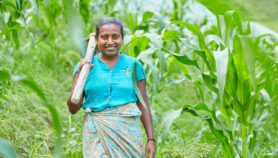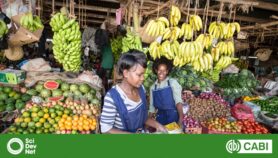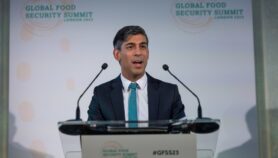By: Mir Saadi
Send to a friend
The details you provide on this page will not be used to send unsolicited email, and will not be sold to a 3rd party. See privacy policy.
[DHAKA] The government of Bangladesh has announced an increase in the use of urea deep placement (UDP) technology to increase the effectiveness of urea fertiliser in the next dry season (November–March).
The move will expand the area of rice farming land where UDP is used to one million hectares, reaching 1.6 million rice-farming families.
C. S. Karim, agriculture adviser from the Department of Agriculture Extension (DAE) of the Bangladesh Ministry of Agriculture, said at a press conference in Dhaka this week (5 January) that Bangladesh must increase its food production every year, particularly due to losses of paddy fields during the recent cyclone and floods.
Only 30 per cent of conventional urea fertiliser — the nitrogen-rich organic compound that is spread throughout the water of rice paddies — is used by crops, as most of the urea vaporises as nitrogen gas or is diluted with water in the field.
Using UDP, where ‘briquettes’ of compressed urea are placed into the soil near the rice root zone following planting, increases yields by 25 per cent and uses about 50 per cent less urea.
Karim added that using UDP means that farmers only need to apply fertiliser once per season, while conventional urea must be applied three times.
The DAE aims to implement UDP in 150 upazilas — subdistricts of Bangladesh —this year. The IFDC, an international centre for soil fertility and agricultural development, is already providing technical assistance in 80 of these upazilas.
According to the DAE, the total cost of the project is about 113.5 million Bangladeshi takas (US$1.63 million) with funds coming from the IFDC and DAE.
But Ishrat Jahan, resident representative of the IFDC Asia division, told SciDev.Net that this is an ambitious target that will be very difficult to achieve due to the huge area involved and the short amount of time to roll out the project.
She says the project received late approval from the Bangladeshi government and was only signed last November. The release of funds is also being delayed, though she says the IFDC has already started work using its own funding.













